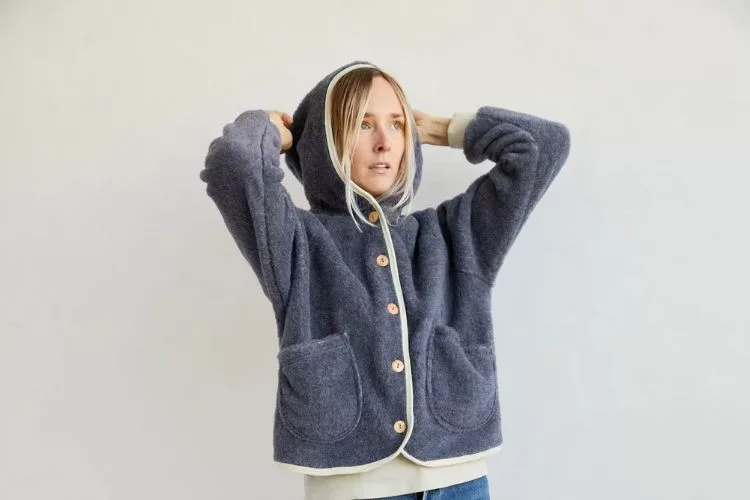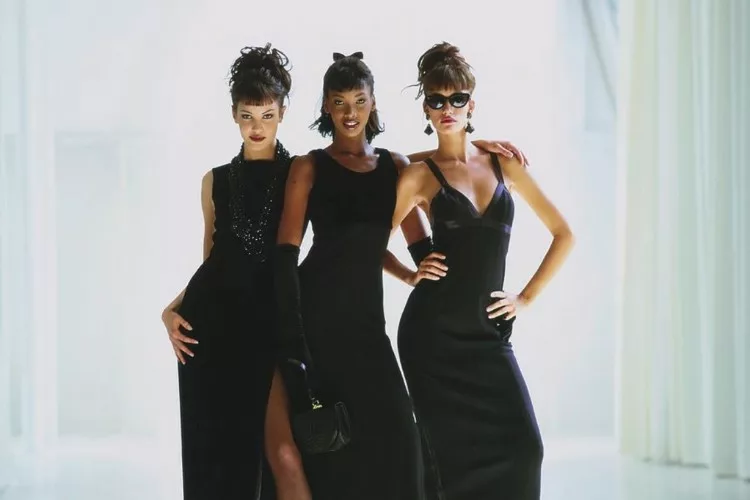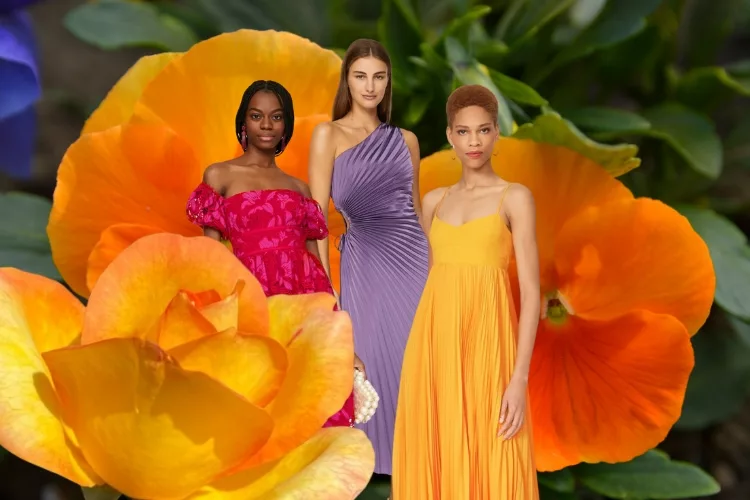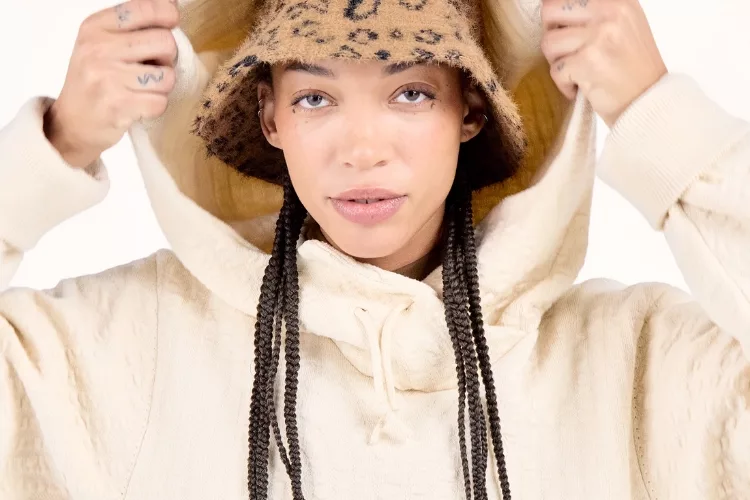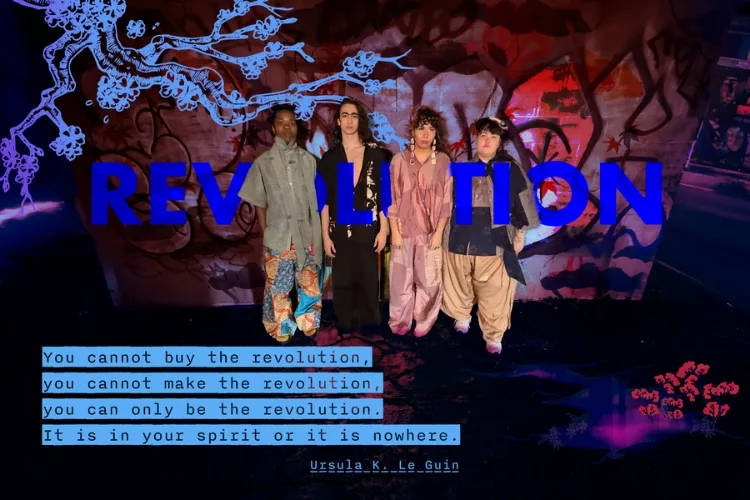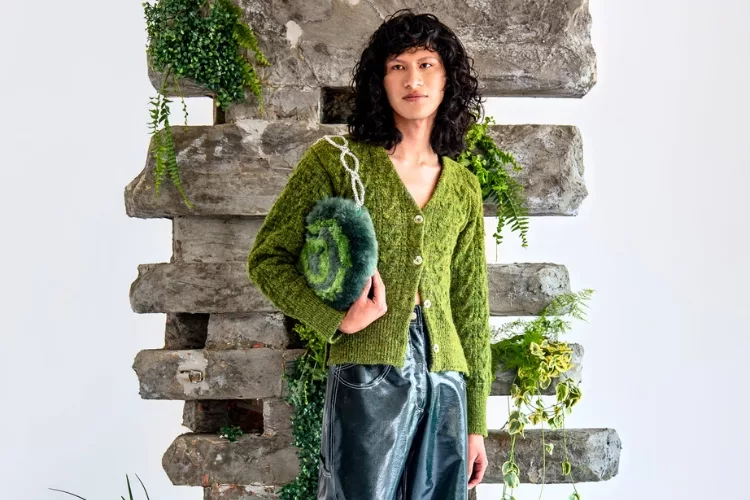(the extra “t” is upcycled and the US stands for Upcycling System!)
Who is the designer of BETTTER.US?
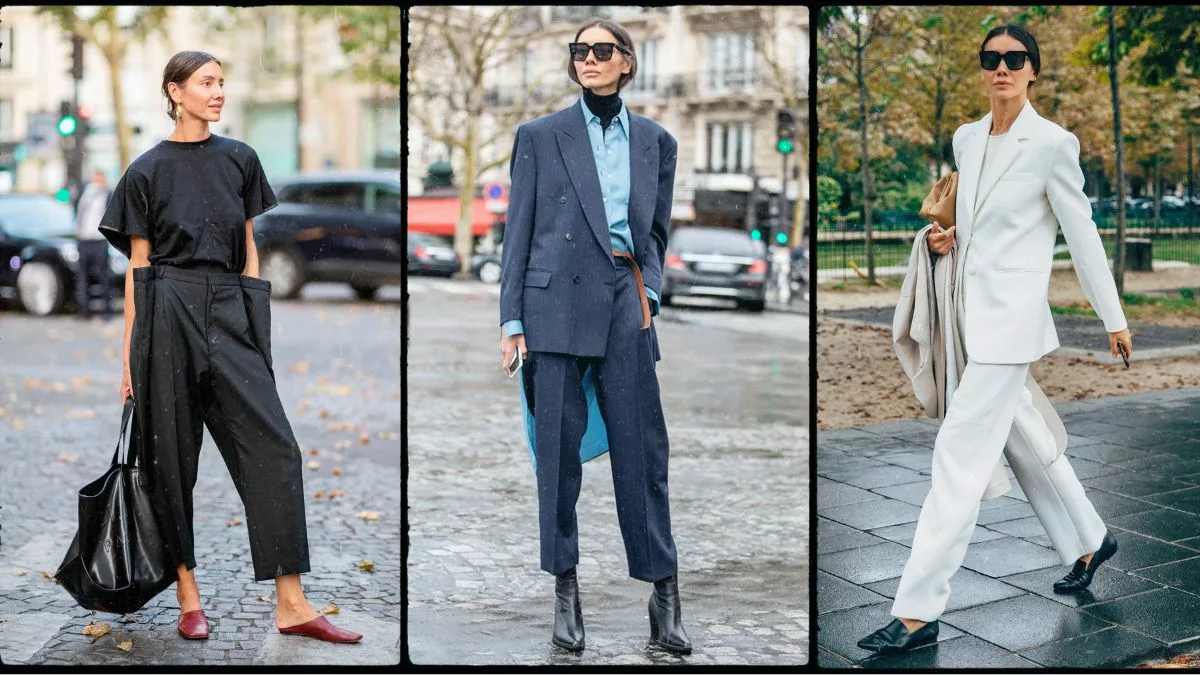
Julie Pelipas, a former fashion editor of Vogue Ukraine with 15 years of experience in the fashion industry and a finalist for the LVMHprize. Julie had been known for upcycling secondhand suits for years as part of her signature tailored look which was a favorite for street-style photographers.
“When it comes to creating clothes, we can do better, we can create beautiful things ethically and thoughtfully. That’s the challenge and the magic.” –Julie Pelipas
How She Got Her Style
Julie might not have become the designer she is today if she hadn’t suddenly had a growth spurt at thirteen. She went from being petite to 6 feet tall within a year. Instead of going shopping for a whole new wardrobe she dipped into her grandfather’s closet and wore one of his suits to school. She loved the confidence that gave her and an obsession was born.
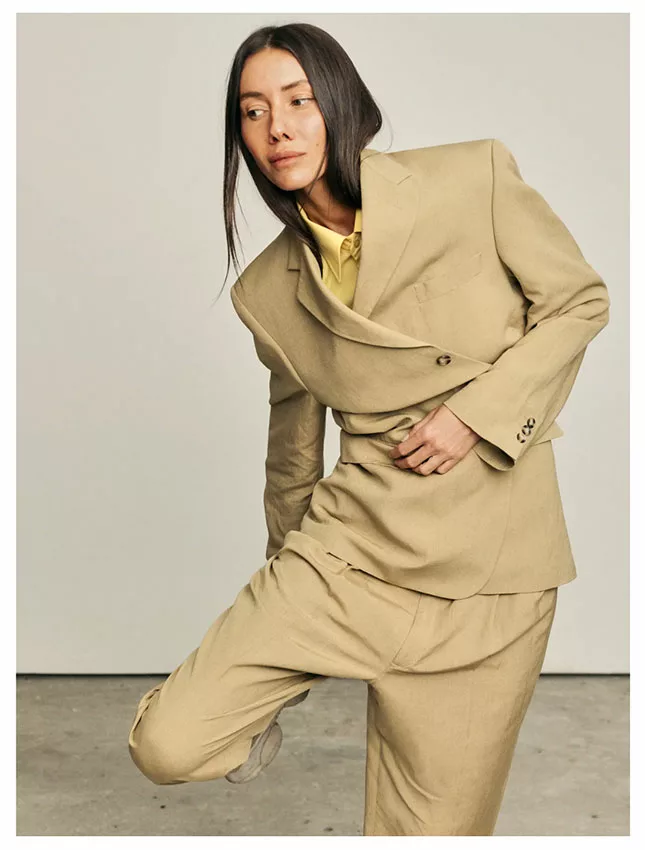
BETTTER isn’t a brand, it’s a system of upcycling
Pelipas understands what many people still don’t get: that there is now more man-made materials in the world than biomass (aka nature). We don’t need to keep taking from the land to create new products. To this end she is looking to disrupt the fashion production system by upcycling deadstock on an industrial scale.
Originally all pieces were sourced locally in Ukraine from vintage. When she began BETTTER, she hired local youths to scout the markets for her. Since the war in Ukraine she has had to move her operation outside of the country and has to adjust accordingly. While Kyiv’s vintage markets are no longer available she has just created a relationship with menswear label Zegna to use their deadstock to create BETTTER pieces.
It’s BETTTER to know the origin of what we wear
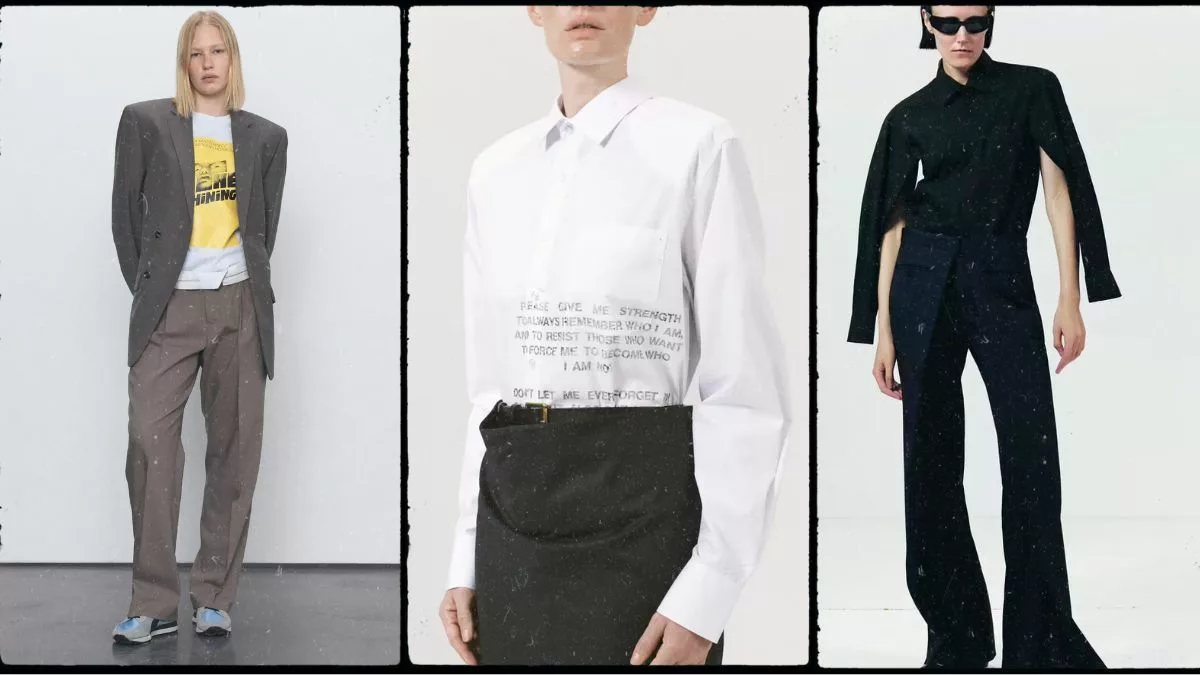
Part of the joy of wearing her grandfather’s suits was the connection to him through the clothes. BETTTER tracks down the origin of all the original suits they use as much as possible –from where it came from to the year of production.
“My dream is that we can share the story behind every piece, including the names of former owners. That’s how, I believe, we will learn to build more sustainable wardrobes where every item has a meaning.” She shared with Vogue Australia
Each piece has a “passport” that documents the supply chain
We buy. We discard. We start all over again. Never knowing the garment’s story, never learning by whom and how it was made. With BETTTER passports we try to reclaim these stories and make our supply chain crystal clear.
A small patch of a technical fabric is sewn into every garment and traces: the provenance of garments, where and when the garment was produced, and where it was sourced.
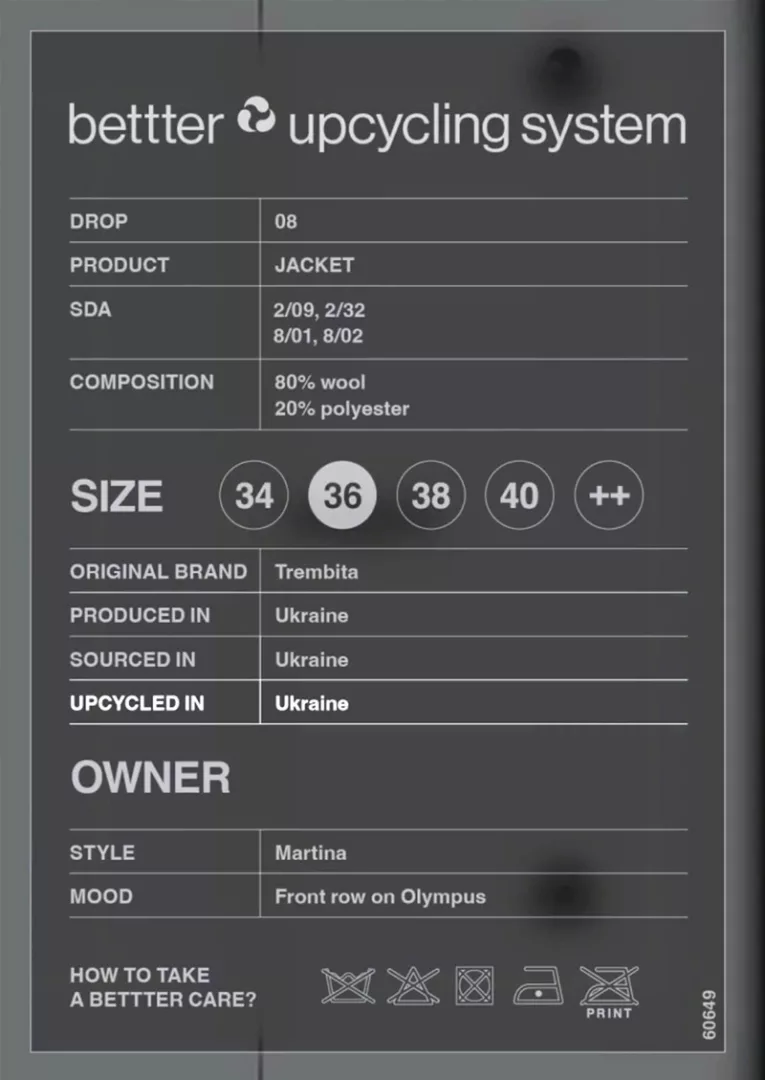
It’s BETTTER to Embraces Technology + Modular Design to Reduce Waste
Each suit is designed via a zipper to go between three clothing sizes so they can change with normal weight fluctuations. She’s also working on an algorithmic tool, which will enable shoppers to custom-design their own Bettter suit tailored to personal specifications.
It’s BETTTER to help our community
bettter X GIVEN NAME community
When Russia attacked Ukraine, Julie moved her family to London for safety. There she began an online community (which has since merged with GIVEN NAME) to help support creatives in Ukraine. By promoting Ukrainian talent, GIVEN NAME community encourages collaborations, cultural relations, and support initiatives with the aim of integrating these people into the global context.
Julie recently received a “Leaders of Change” award from the British Fashion Council for her work fostering this community.
Quick Takes is a new series profiling a designer/brand that make clothes in a ‘responsible way’ without sacrificing style.
Related Articles

